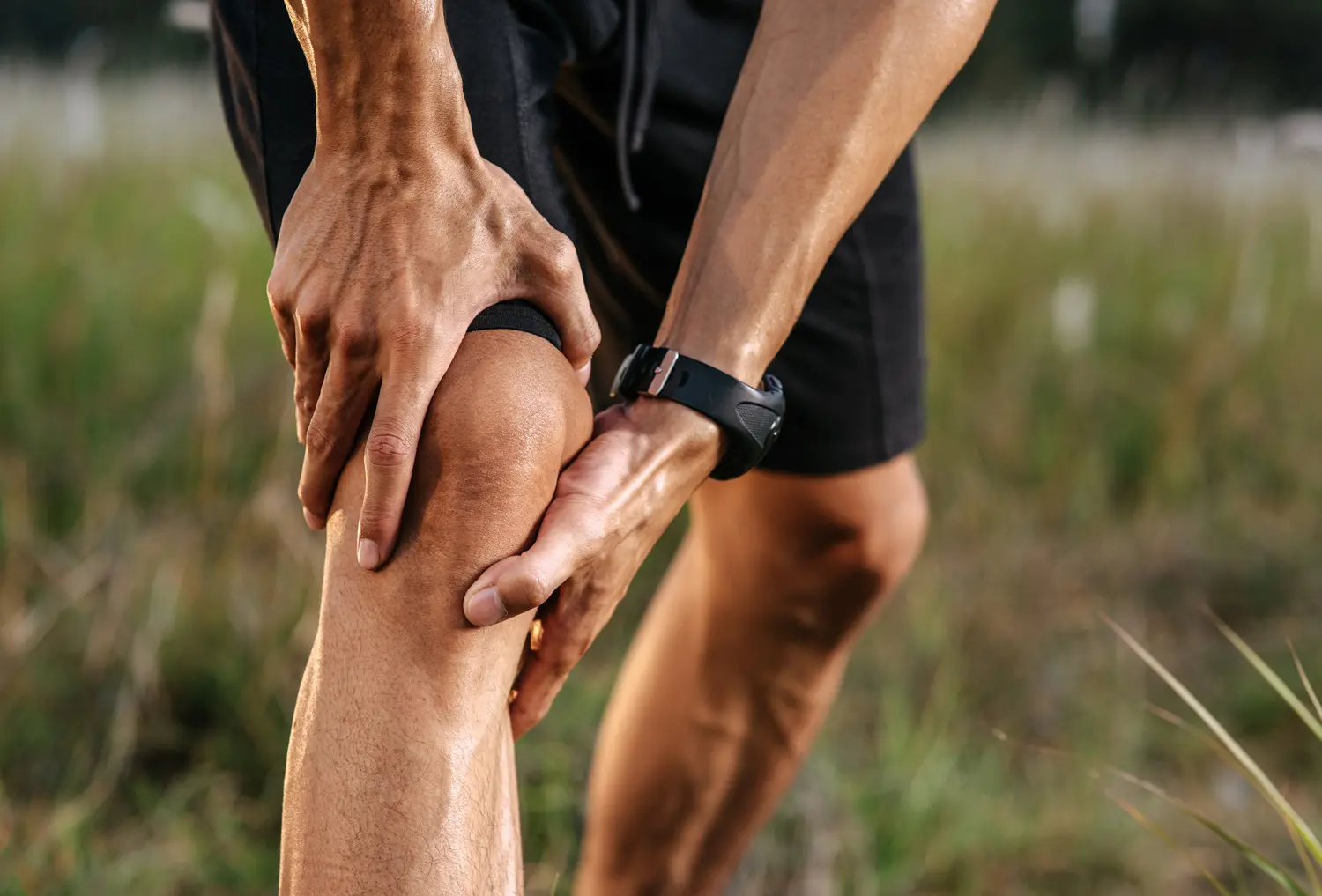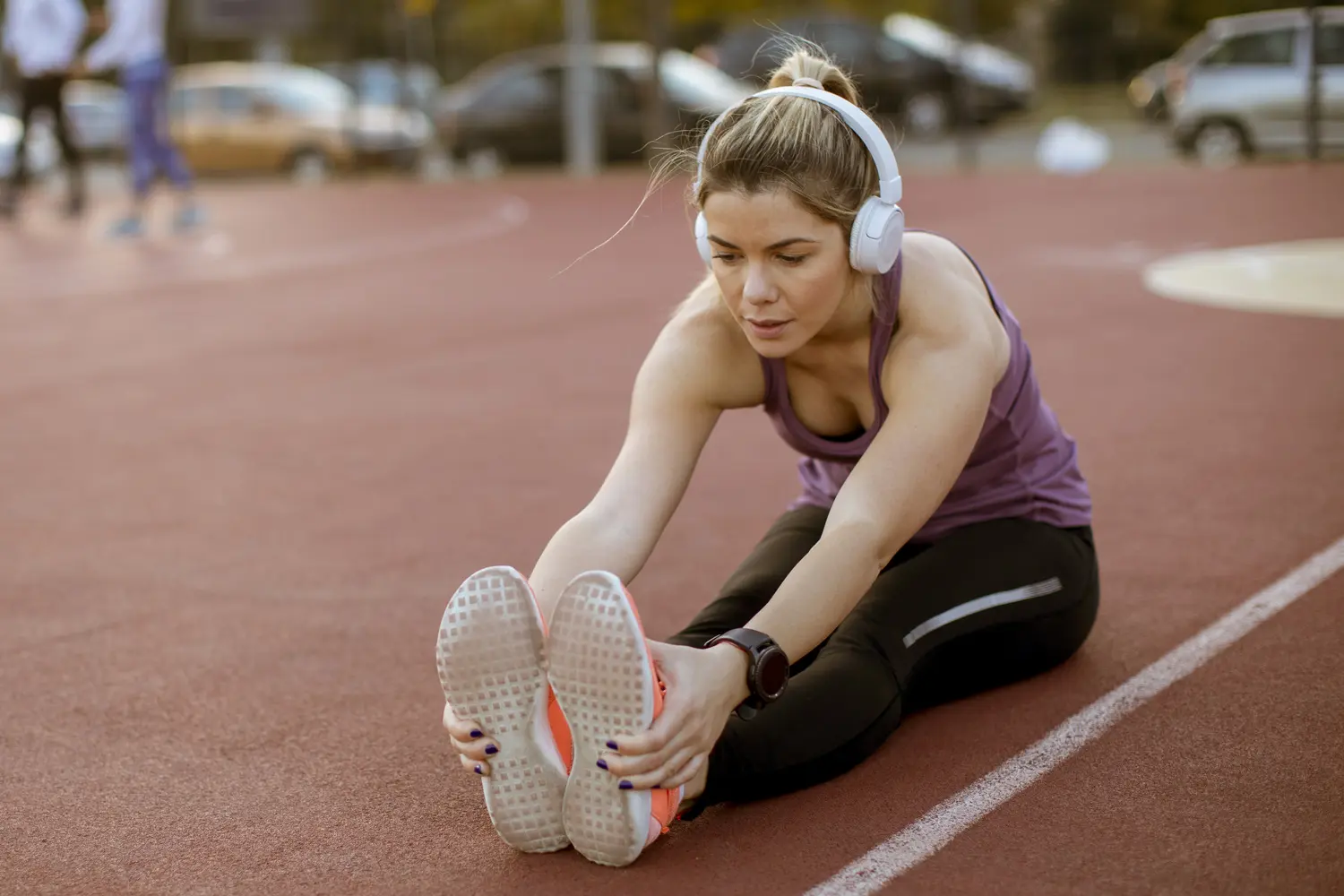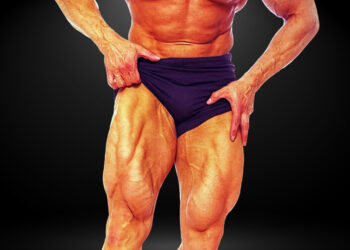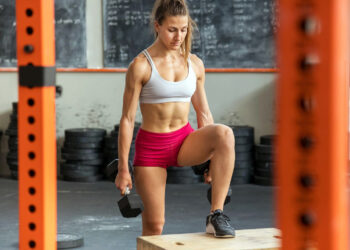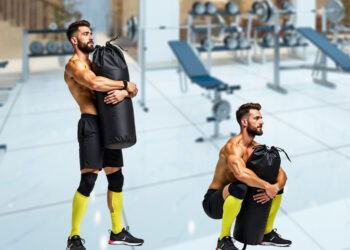If you’ve been training hard for any length of time almost anyone reading this right now can relate to sore knees. You know that feeling you get as you cringe when you see others do a box jump or play a pickup game of basketball? Yeah, you suddenly feel this ghost-like twinge in your knees as if they’ll buckle at any moment.
Yet, we still want to be able to go to the gym, get under the squat bar, and rep out like nothing’s bothering us. But despite our best intentions and efforts, we continuously battle this withered joint into submission with hopes of it fixing itself one day. We either pound away trying desperately to build bigger legs or we finally give up, drop our guns, and put our hands up surrendering our lower bodies to the stereotypical excuse of “too much joint mileage” and/or old age creeping in.
It’s time to own-up to our pain – to our weak link in the chain. It’s time to put up or shut up and finally figure out what we’re doing wrong and how we can fix it. There is hope, there are things to adjust and change, and there are more ways to build muscle in your legs. It’ll take swallowing your pride, an open mind, and some patience, but you can get there. Let’s begin.
Physique balancing act
First and foremost you’ll want to develop a healthy physique – one that is both strong and healthy. That health must extend to your joints as well. Cranky knees might not just be an annoyance. It could be signs and symptoms of more adverse problems in the near future. It pays to stop and evaluate what you’re doing wrong right now and commit to fixing it.
Additionally, when it comes to strength and balance, you’ll want to develop a balanced physique not only for vanity reasons but also distribution of strength throughout your entire body [1] [2]. Strong legs equal a stronger upper body.
Level Up Your Fitness: Join our 💪 strong community in Fitness Volt Newsletter. Get daily inspiration, expert-backed workouts, nutrition tips, the latest in strength sports, and the support you need to reach your goals. Subscribe for free!
How do we get bad knees?
Let’s take a quick look at how we got here in the first place and maybe it can shed some light on where to go next.
Little to no attention to form
Yes, it’s apparent that this first one is a no-brainer, but it is astounding how many lifters gloss over this vital principle. With ego so critically attached to the squat, it’s no wonder your knees are screaming.
Loading on more weight seems to be of utmost importance over knee health. Other factors can play into this as well such as ankle mobility, spinal stability, and proper bracing while breathing.
Exercise execution
Quick question: are you guilty of loading up the leg extension machine and powering through low rep sets all the while slinging your hips up and down in the seat just so you can lift the entire weight stack? As the leg extension machine puts direct sheer force on the patellar tendon, it could possibly be the culprit for your knee pain versus squats.
Other exercises done incorrectly include leg press (letting the weight fall toward you versus under control), knee alignment during squats (the knees trailing in or out too far), and uncontrolled ballistic moves such as box jumps or step-ups (not descending under control or with proper back and knee alignment).
Lack of hamstring strength
A lower body imbalance could also contribute to weak knees. Hamstring and glute strength support the quadriceps in a very synergistic way. Without proper balance, strength in one area could compromise another area. Training the hamstrings equally will ensure a strength balance is achieved and the knees would be supported from all sides.
Related: 9 Effective Tips For Superior Hamstring Development
ROM limits
A quick search on the internet will surely give you countless results about how we all should squat until our butts hit the floor. If you’re not squatting butt to the floor then you’re not really training right, or so the story goes.
The fact is that everyone is built differently. We all have some sort of mobility issue – some we can fix and others we can’t. Our range of motions will all be slightly different, especially at different stages of our lifting careers.
Level Up Your Fitness: Join our 💪 strong community in Fitness Volt Newsletter. Get daily inspiration, expert-backed workouts, nutrition tips, the latest in strength sports, and the support you need to reach your goals. Subscribe for free!
Too much wear and tear
Lastly, if you’re performing a significant amount of exercise or activity outside of the gym then your knees could be begging for a break. Running, sports and other activities that have your knees under additional pressure could be contributing to some of the wear and tear you’re experiencing. This, in turn, affects your lower body training in many ways.
Do we have a chance at squatting again?
Yes, you can squat again and squat more effectively I might add. It will take some pride swallowing and a hefty load of patience, but it can be done. As one of the most effective exercises known to man, the squat should still have a place in your program. Let’s see how we can get there.
How we get better knees
Here are a few points to consider when breaking down and dissecting your squat form and function. It’s not an exhaustive list but guaranteed to help those who desire to get back under the bar.
Alignment
Make sure that whichever stance you decide to use (wide, shoulder-width, narrow) that your knees are perfectly in line with your feet. This may be a bit challenging at first since most of us tend to either track our knees in or out slightly.
Most will have a problem with knee valgus (caving in of the knees during squats). This is usually due to weak abductors [3]. Remain cognizant of the discrepancy and possibly loop a band around your knees to force your knees to remain wide and in line.
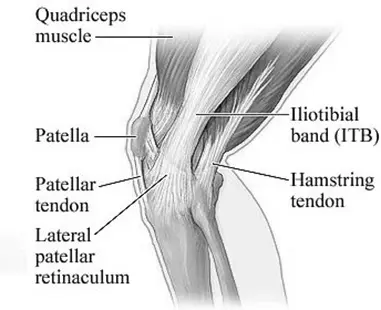
More compound moves
As stated earlier, the leg extension can wreak havoc on your knees especially when high loads are used. At least initially, drop the extensions and focus more on multiple joint, compound movements for legs. This enables a larger pool of muscles to take the load and somewhat offload stress to the knees.
In other words, your knees won’t have to take the lion’s share of the load and allow your quads and hamstrings to absorb the stress more effectively and safely.
Posterior chain
Be sure to train your posterior chain musculature from your hamstrings to your glutes and lower back. You may even want to add more volume than for your quads. Be sure to include contraction exercises such as leg curls and lengthening exercises such as Romanian deadlifts. Perform every rep with textbook form. No need to worry about weight right now.
ROM and mobility issues
Range of motion can be a personal or genetic issue, but for many of us improvements can be made. Check your ankle mobility.
- Do you rise up on your toes during a squat?
- Do you require elevation under your heels?
- Also, how is the mobility in your hips and back?
- Are your glutes tight causing some lower back stiffness and pain?
Stretch these areas each and every day. Over time you will start to loosen up these areas, shore up pain and range of motion problems and begin to feel relief.
Have patience with each rep
When breaking down the squat to its essentials you’ll need to strip away all that you’ve been doing. First, start with a bodyweight squat. Do several sets or 10 or 15 reps with perfect form. Once that is achieved place an empty bar on your back and again shoot for several sets of 10 to 15 reps. Stay with just the bar for two or three workouts until you are absolutely comfortable with your form. Afterward, load only a small amount of weight to the bar for another two or three workouts until you’re comfortable once again.
What you’re doing is retraining your body to behave in a different way. You’re relearning the squat the right way. This combined with your daily mobility routine will cause you to realize a new way of thinking about how to properly activate and target your thighs with the squat. Have patience.
In closing
Bad knees aren’t a death sentence signifying that your squatting days are over. All you need is some self-assessment and patience. Balancing both your physique and strength will not only improve your aesthetics, it’ll also help your body perform more holistically.
Start slow and build your form and function from the ground up. Swallow your pride and relearn every nuance to the squat for bigger, better legs.
References:
- Folland JP, Williams AG. The adaptations to strength training: morphological and neurological contributions to increased strength. Sports Med. 2007;37(2):145-68. doi: 10.2165/00007256-200737020-00004. PMID: 17241104.
- Young WB. Transfer of strength and power training to sports performance. Int J Sports Physiol Perform. 2006 Jun;1(2):74-83. doi: 10.1123/ijspp.1.2.74. PMID: 19114741.
- Emamvirdi M, Letafatkar A, Khaleghi Tazji M. The Effect of Valgus Control Instruction Exercises on Pain, Strength, and Functionality in Active Females With Patellofemoral Pain Syndrome. Sports Health. 2019 May/Jun;11(3):223-237. doi: 10.1177/1941738119837622. Epub 2019 Apr 29. PMID: 31034336; PMCID: PMC6537321.

